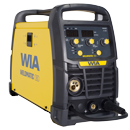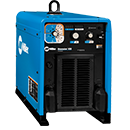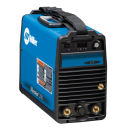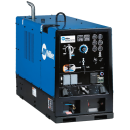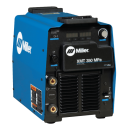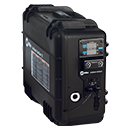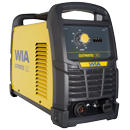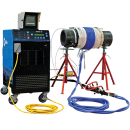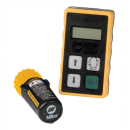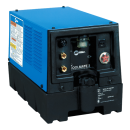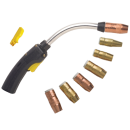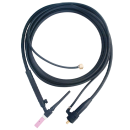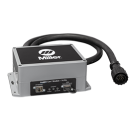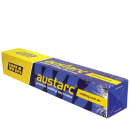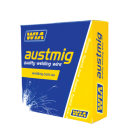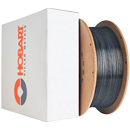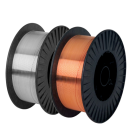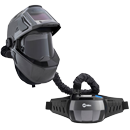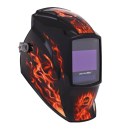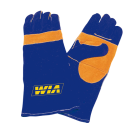Selecting the Right Stick Electrode
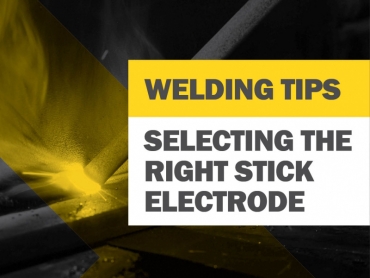
Stick welding takes a lot of practice to master, and selecting the correct electrode for the job can be challenging.
There are a wide range of Stick electrodes available, each provide different mechanical properties and operates with a specific type of welding power source. When selecting a stick electrode, consider the base metal type, joint fit-up and welding positions. Before you begin welding the below guidelines should be considered.
Assess Your Base Metal
Step one - determine your base metal composition. Your goal is to match (or closely match) the electrode composition to the base metal type, this will help ensure a strong weld. If in doubt, ask yourself these questions:
What does the metal look like?
If you’re working with a broken part or component, check for a coarse and grainy internal surface, which usually means the base material is a cast metal.
Is the metal magnetic?
If the base metal is magnetic, there’s a good chance that the base metal is carbon steel or alloy steel. If the base metal is not magnetic, the material could be manganese steel, 300 series austenitic stainless steel or a non-ferrous alloy such as aluminium, brass, copper or titanium.
What kind of sparks does the metal give off when touched by a grinder?
As a rule of thumb, more flare in the sparks indicates a higher carbon content such as in A-36 grade steel.
Does a chisel “bite” into the base metal or bounce off?
A chisel will bite into a softer metal, such as mild steel or aluminium, and bounce off harder metals, such as high carbon steel, chrome-moly or cast iron.
To prevent cracking or other weld issues, match the minimum tensile strength of the electrode to the tensile strength of the base metal. You can identify this by referring to the first two digits of the AS/NZS classification (see figure 1). For example, the number “43” on an 4313 electrode indicates that the filler metal produces a weld bead with a minimum tensile strength of 430Mpa and, meaning it would work well with a steel of similar tensile strength.
Some electrodes can be used with only AC or DC power sources while other electrodes are compatible with both. To determine the correct current type for an electrode, refer to the second two digits of the AS/NZS classification (see figure 1), which represents the type of coating and type of compatible welding current (see figure 2).
Figure 1
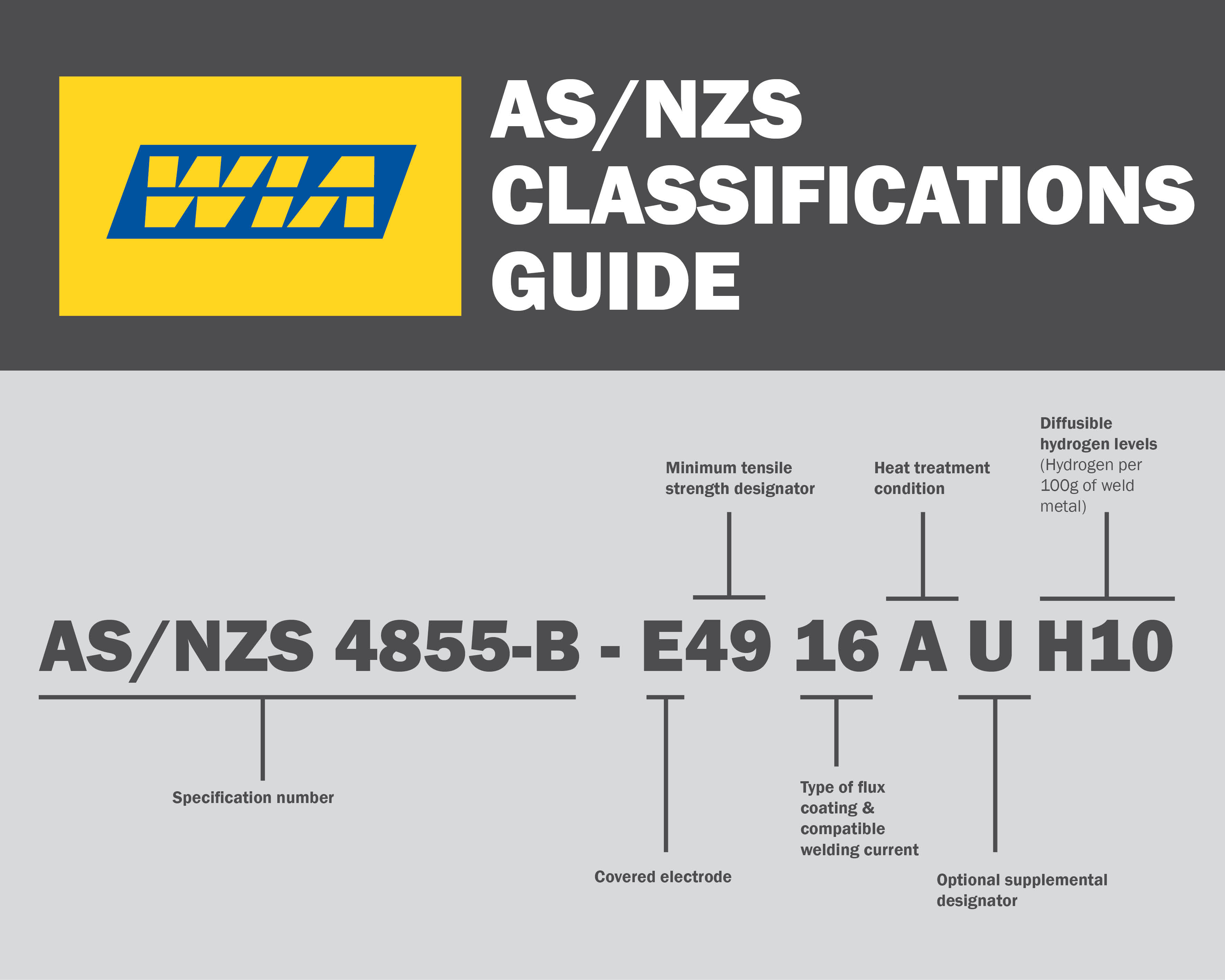
Figure 2
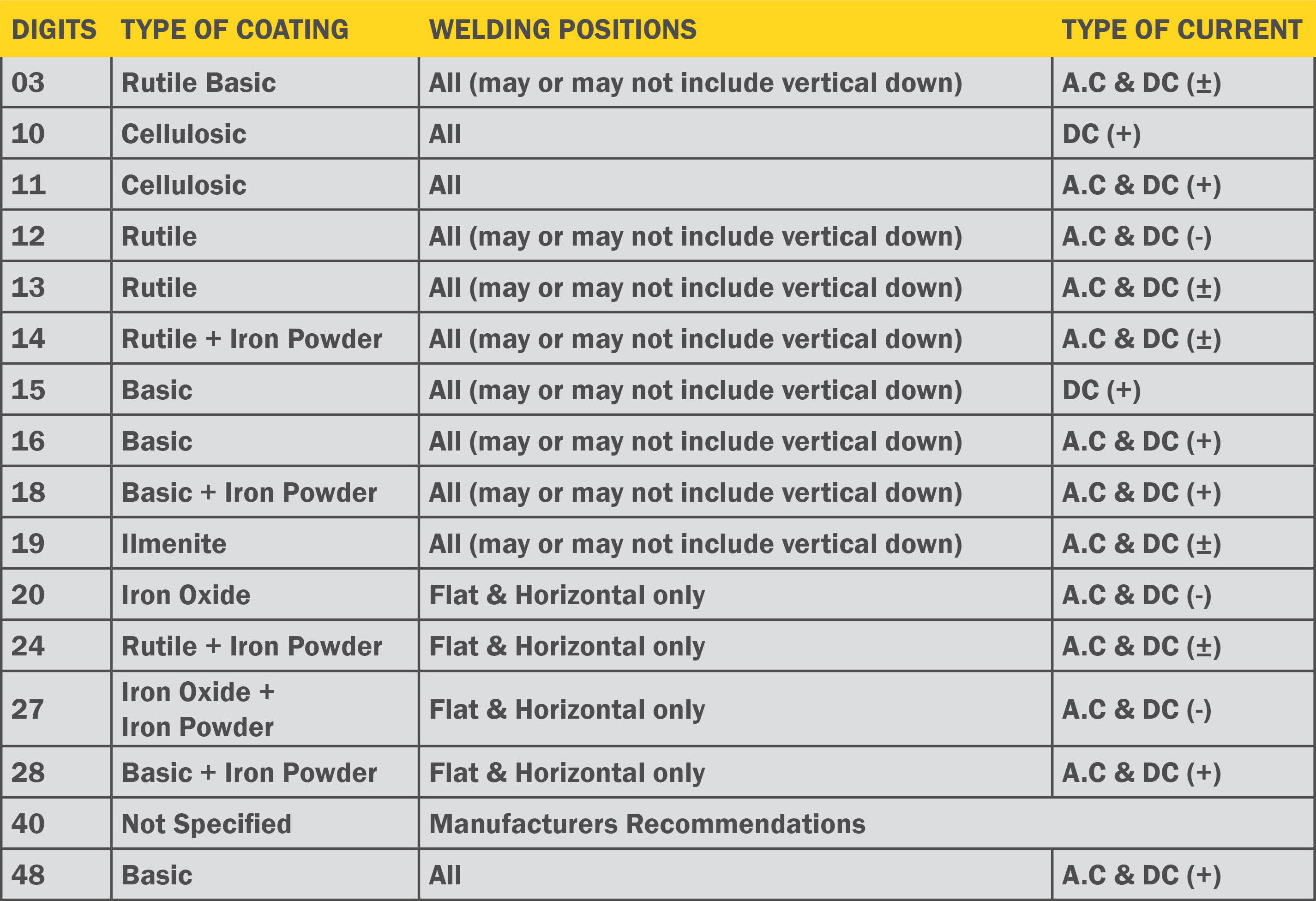
For example, an E4916 electrode can be used in the flat, horizontal, vertical and overhead positions (all).
The type of current you use also influences the penetration profile of the weld. For example, a DCEP compatible electrode, such as an E4310 delivers deep penetration and produces an extremely tight arc. It also can “dig” through rust, oil, paint and dirt. A DCEN compatible electrode, such as an E4312, provides mild penetration and works well when bridging two joints or welding high speed, high current fillet welds in the horizontal position.
An AC compatible electrode, such as an E4313, produces a soft arc with medium penetration and should be used to weld clean, new sheet metal.
Base Metal Thickness, Shape and Joint Fit-Up
Thick materials require an electrode with maximum ductility and low hydrogen to prevent weld cracking. Electrodes with AS/NZS classification numbers ending in 15, 16 or 18 provide excellent low–hydrogen properties and good toughness (high impact values) to accommodate for residual stress.
For thin materials, you will need an electrode that produces soft arcs, such as a 4313, Also, smaller diameter electrodes will provide shallow penetration to help prevent burn-through on thinner materials.
You’ll also want to assess the joint design and fit-up. If you’re working on a joint with a tight fit-up or one that is not bevelled, use an electrode that provides a digging arc to ensure sufficient penetration, such as an E4310 or E4311. For materials with wide root openings, select an electrode, such as an E4312, that creates a concave weld face suitable for bridging gaps and making groove welds.
Next, assess the conditions that the welded part will encounter. If it will be used in high heat or low temperature environments, subjected to repetitive shock loading, a low hydrogen electrode with higher ductility will reduce the chance of cracking. Also, check for welding specifications. If you’re working on critical applications such as pressure vessel or boiler fabrication, it’s likely a specific type of electrode will need to be used.
To achieve the best results, remove excessive mill scale, rust, moisture, paint and grease. Clean base metals help prevent porosity and increase travel speeds. If cleaning your base metal is not possible, E4310 or E4311 electrodes deliver a deep penetrating arc that has the ability to cut through contaminants.
If you need assistance in selecting a welding electrode give one of our Filler Metal Specialists a call.
National
Fuhai Liu – 0419 864 812
Mathew Hefferan – 0417 096 188
North Queensland
Craig Robertson – 0439 278 960
New South Wales
Rodney Higgins – 0418 877 953
South Queensland
Rohin Rutherford – 0413 045 914
Western Australia
Alex Longman - 0412 417 246






